Pixel 8 review: Our verdict on the new Google phone
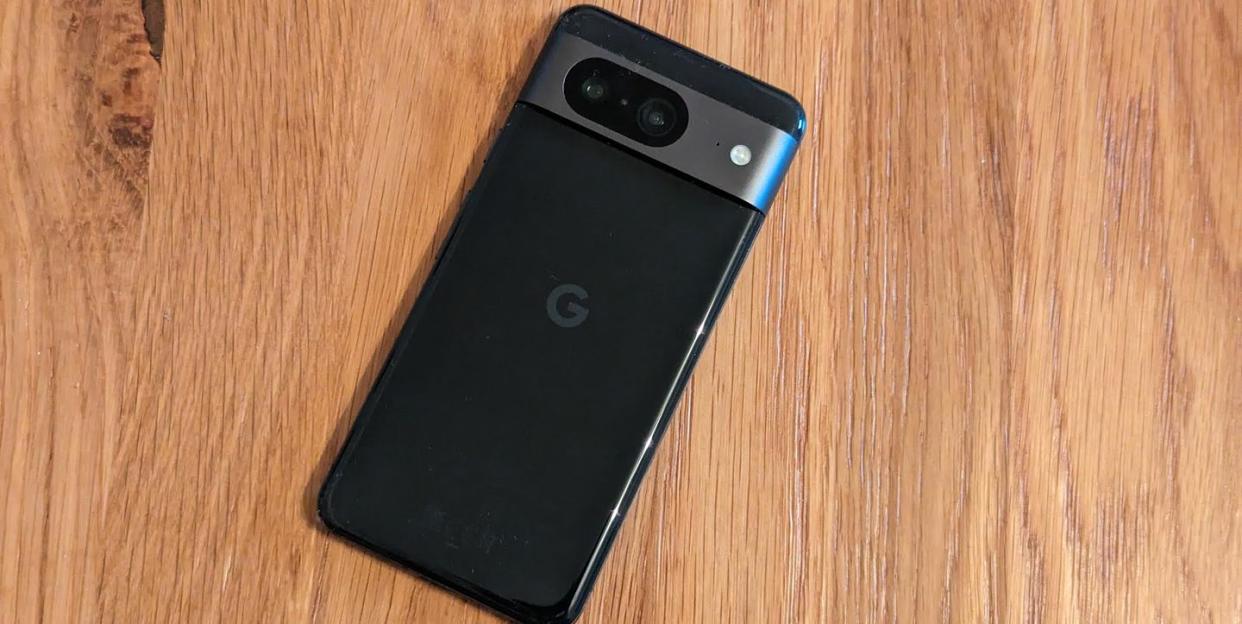
The Pixel 8 is the (new) best Android phone for most people. It doesn't take the crown from a Samsung, Nokia, Sony or Motorola – it swipes it from the Pixel 7. With a fantastic camera system, smooth performance and a bright display, the Google flagship is a smartphone that most people will struggle to find major issues with. We sure did.
The smaller screen size ends up making a big difference, with the handset feeling great in the hand – especially if you're coming from a larger phone like the Pixel 7 Pro or the iPhone 15 Plus. While photographers will get more enjoyment from the 8 Pro, everyone else is unlikely to miss the extra lenses, AI magic and features during day-to-day use.
The design hasn't changed, but you get the promise of seven years of software support, a full embrace of AI photo and audio editing, a clean install of Android 14 and – for the first time on a non-Pro model – a display that goes up to 120Hz. It is an excellent package that easily competes with other flagships you’ll find from any other phone brand in 2023 (and for a much more reasonable starting price, too).
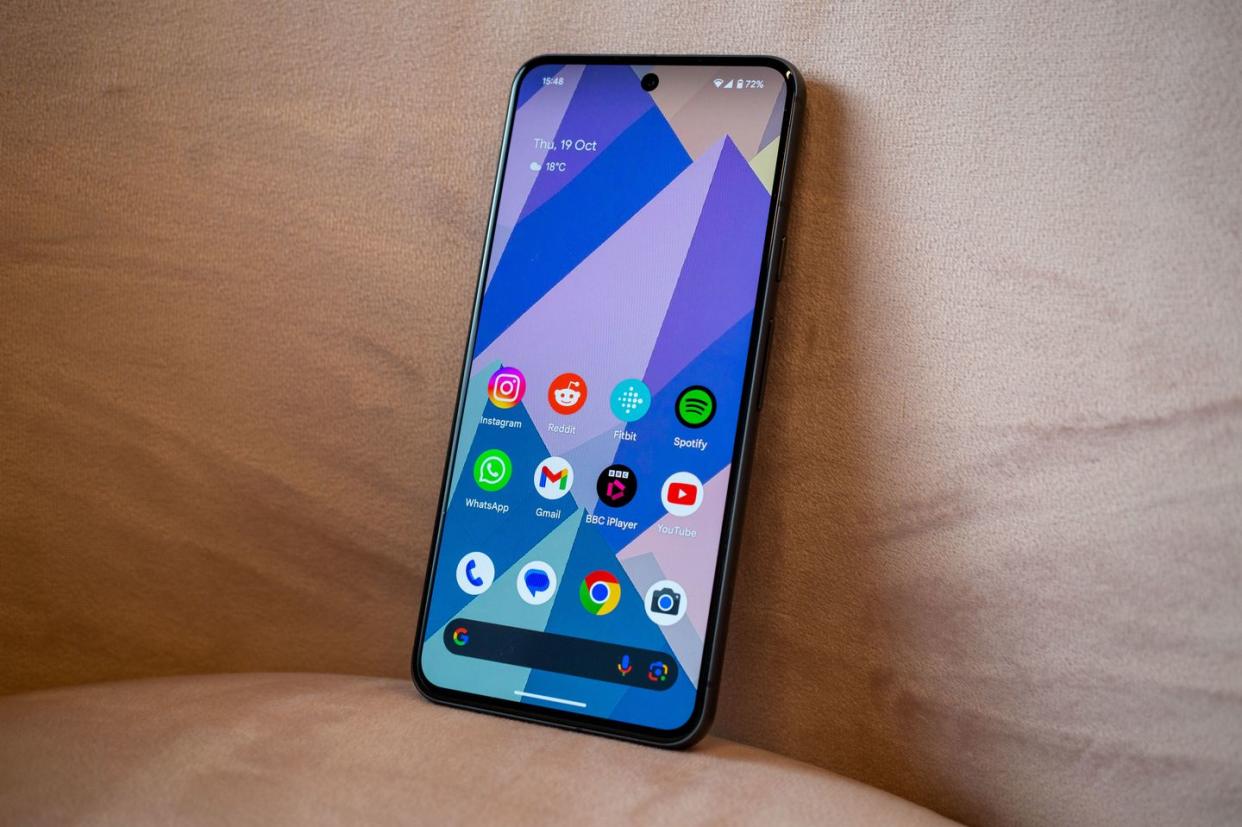
Google Pixel 8 key specs
Screen size: 6.2 inches
Resolution: 1080 x 2400 pixels (OLED)
Operating system: Android 14
Processor: Google Tensor G3
Cameras: 50MP wide, 12MP ultra-wide, 10.5MP front
Battery: 4,575mAh (24+ hours)
Storage: 128GB/256GB
RAM: 8GB
Weight: 187g
Water resistance: IP68
MicroSD slot: No
Google Pixel 8 design
The design hasn’t changed much – the camera bump is still large and runs along the full width of the back panel, although it’s now made from a darker aluminium finish than the prior model. The bezels around the OLED display are about as small as you’ll get without being fully edge-to-edge, and the corners now have slightly more dramatic corners. But it’s minimal – it mostly looks just like the other Pixels.
The size of the handset has been reduced, though, from 6.3 inches to 6.2 inches. It’s been refreshing coming from the 6.7-inch Pixel 7 Pro, and we’re enjoying being able to tap the entire screen without having to awkwardly stretch our fingers or hold the phone with two hands. If you’re a fan of more nimble phones, you’ll appreciate the change.
Colour selection isn’t as varied as the iPhone 15 but you can choose from black, pink or green. We tested the black model, and do like the glass finish, although we wish the new “Bay” blue was available on the base handset. You’ll have to fork over for the Pro for that. The metallic sides and smaller size make this a bit less slippery than previous models, but we reckon that you’ll still want to buy a case for some extra protection and side grip. We’re using the Mous Limitless 5.0 black leather.
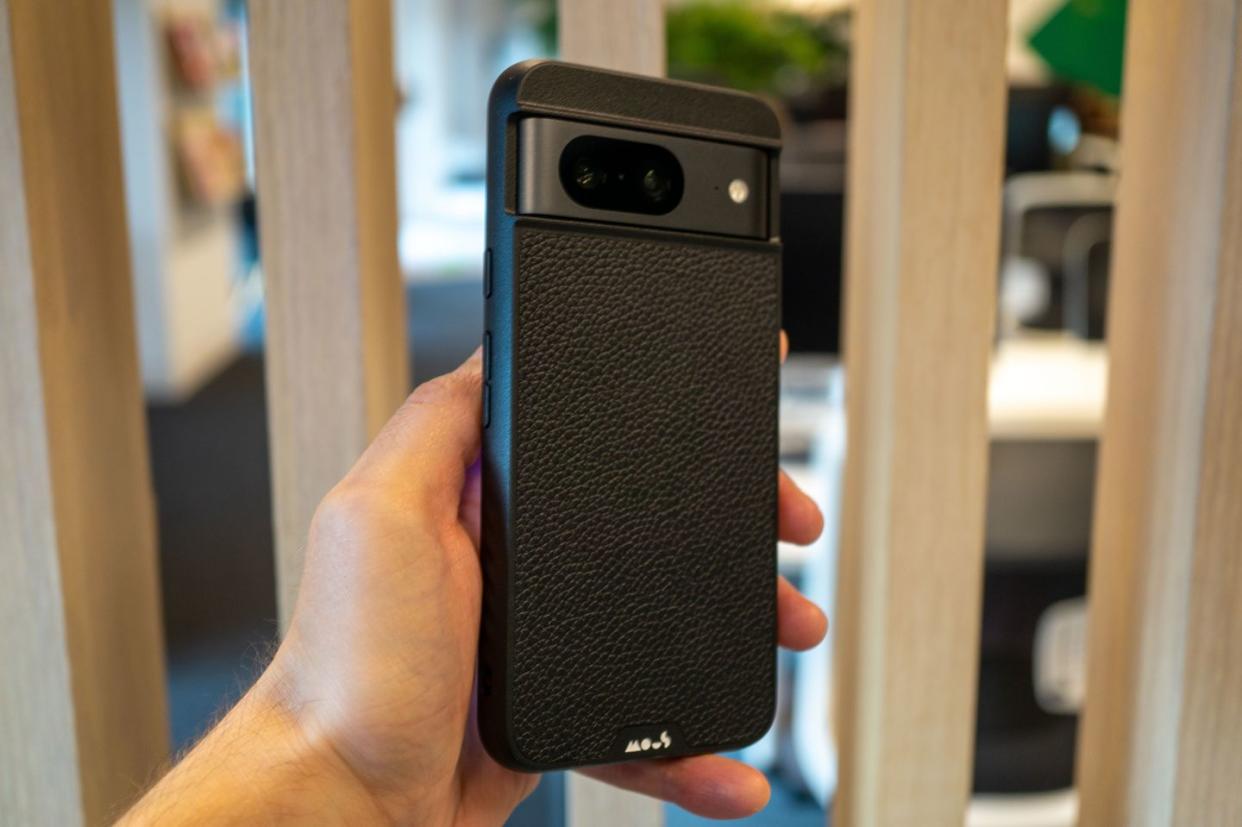
Google Pixel 8 display
Even if the design changes are minimal, the display is better than ever. Google now calls it an “Actua” display, and while we’re still trying to figure out what that means, we can report that it’s colourful, responsive to our taps and very, very bright. You’ll have no issue seeing this screen in sunny conditions. You may find yourself turning it way down when you’re looking at the screen on the train, and especially in bed at night.
The refresh rate now drifts between 60Hz and 120Hz depending on how it’s being used, so it feels smoother than the Pixel 7 and 7a, which were both locked to 90Hz. Just make sure you toggle on the “smooth display” mode in the settings – it’s turned off by default to extend the battery.
Despite the smaller screen size, we had no issues when watching YouTube or catching up with an episode of Spooks during the commute to work. This is an OLED panel – and because it’s been paired with excellent brightness it delivers fantastic contrast and black tones. While you may appreciate the Pro’s larger display for gaming, we had no problems using the smaller one for streaming, reading websites and scrolling Reddit.
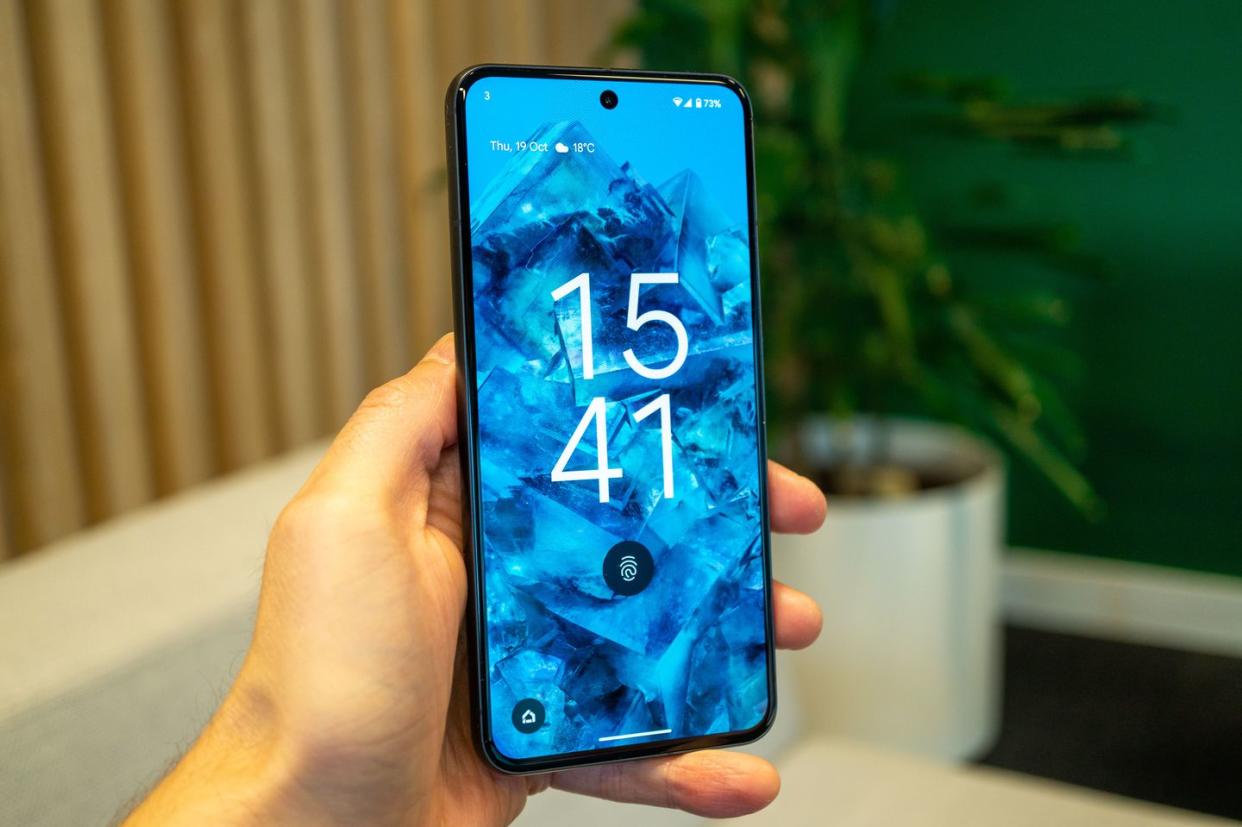
Google Pixel 8 camera
There’s a dual-camera system on the Pixel 8 – a 50MP wide is your main shooter, and there’s a secondary 12MP ultra-wide if you need to take more dramatic landscape shots.
On the front, you get a 10.5MP selfie camera, which is the same as the Pro model. What you do lack from the 8 Pro is a third 48MP telephoto lens. But casual users won’t miss it: this is still a very capable point-and-shoot setup that makes taking great shots effortless – even in low light.
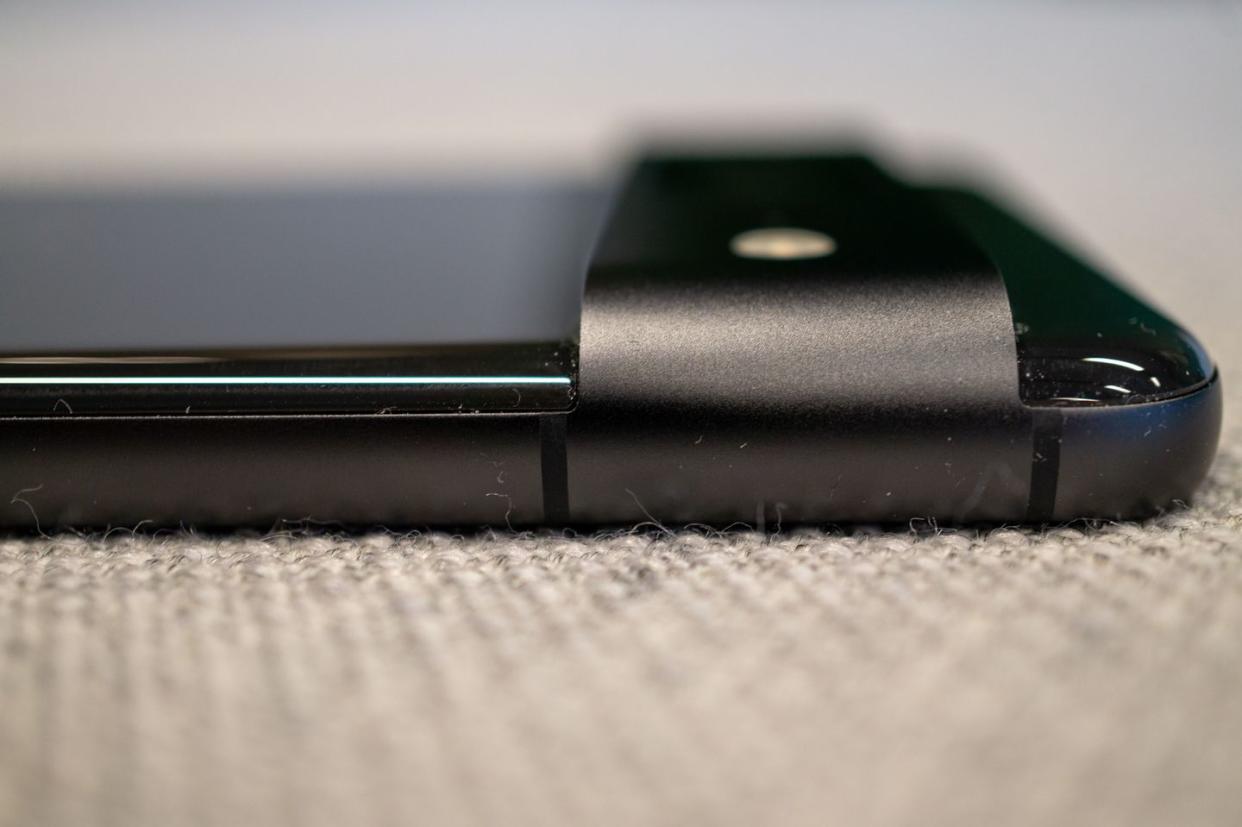
You won’t need to edit images for social media, and although the iPhone 15 is arguably more accurate with its colours, the Pixel 8’s algorithmic magic makes its results more visually pleasing to the naked eye. Colours pop and the contrast is boosted, but never to an unnatural degree.
AI lurks behind every corner of the camera experience. There’s a variety of modes that would have seemed like sci-fi a decade ago. Best Take lets you swap in faces from a collection of group shots to create an image in which everyone has their eyes open and the right expression. Audio Magic Eraser reduces background noise from videos. Magic Eraser removes people or objects from pictures in a matter of seconds.
Magic Editor – a new mode that’s still a work in progress – goes one step further by letting you resize or literally move objects or people, or let AI analyse a shot to remove distractions, add a background blur or enhance its colours. This gives basic Photoshop skills to the masses.
If the smartphone AI senses that you are editing an outdoor shot, it will automatically suggest a couple of changes. In one shot that we chose, it gave us the option of changing the water and sky or updating the colour tones to either golden hour or stylised.
Here’s the original:

And here are the four AI-generated results:
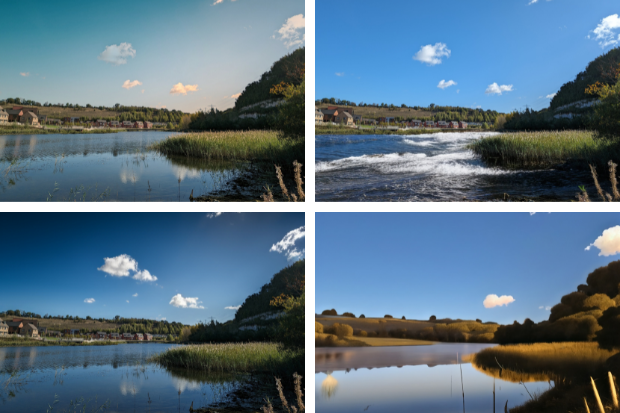
Magic Editor works, but needs refinement. You’ll need to back up a photo before it can be edited, and don’t forget that if you expand a subject it will still be in its original resolution. Check out this massive duck:
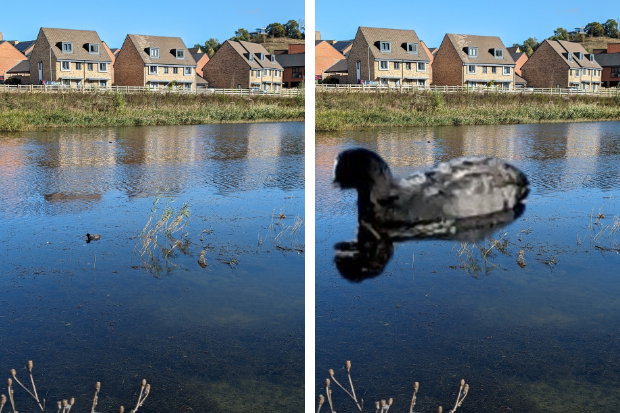
We’re still not convinced these are must-have tools that'll actually use that much. They are very cool to show off, and it’s bordering on alarming just how well Google injects AI into its Pixels. Best Take is the best example of how it walks the line between impressive and unnerving – as you swap the faces of your friends and loved ones to build and curate a perfect image into existence that’s devoid of normal human flaws.
Alongside the third lens, the Pixel 8 lacks some modes from the Pro: Video Boost, Night Sight Video, Pro controls and hi-res photography that lets you shoot in RAW. It’s a shame, but we get it: these are what ultimately sets the £999+ Pro Pixel from this standard model.
Here’s a selection of images taken with the Pixel 8’s camera system – none have been edited or altered in any way.
Google Pixel 8 software and performance
It’s been true for years, but the Pixel’s performance is consistently speedy and smooth, and although it sometimes runs hot when you’re opening lots of apps at once, backing up a chunk of data or gaming, we’ve found this to be rare during our week with the smartphone, and it has never impacted performance to the point where we see lag or crashes.
Inside the Pixel 8 is a Tensor G3 processor and a Titan M2 security chip, the same internals as the Pro model. Combined, they power the majority of Google’s AI sorcery. One of those breakthroughs is secure face unlocking. For the first time, you can authorise payments and log into banking apps in this way – previous models only let you use the fingerprint scanner. It is all thanks to the latest chip and machine learning algorithms, so Google hasn’t had to add a bunch of hardware (and a big notch) on the front. The pinhole-style selfie camera remains here.
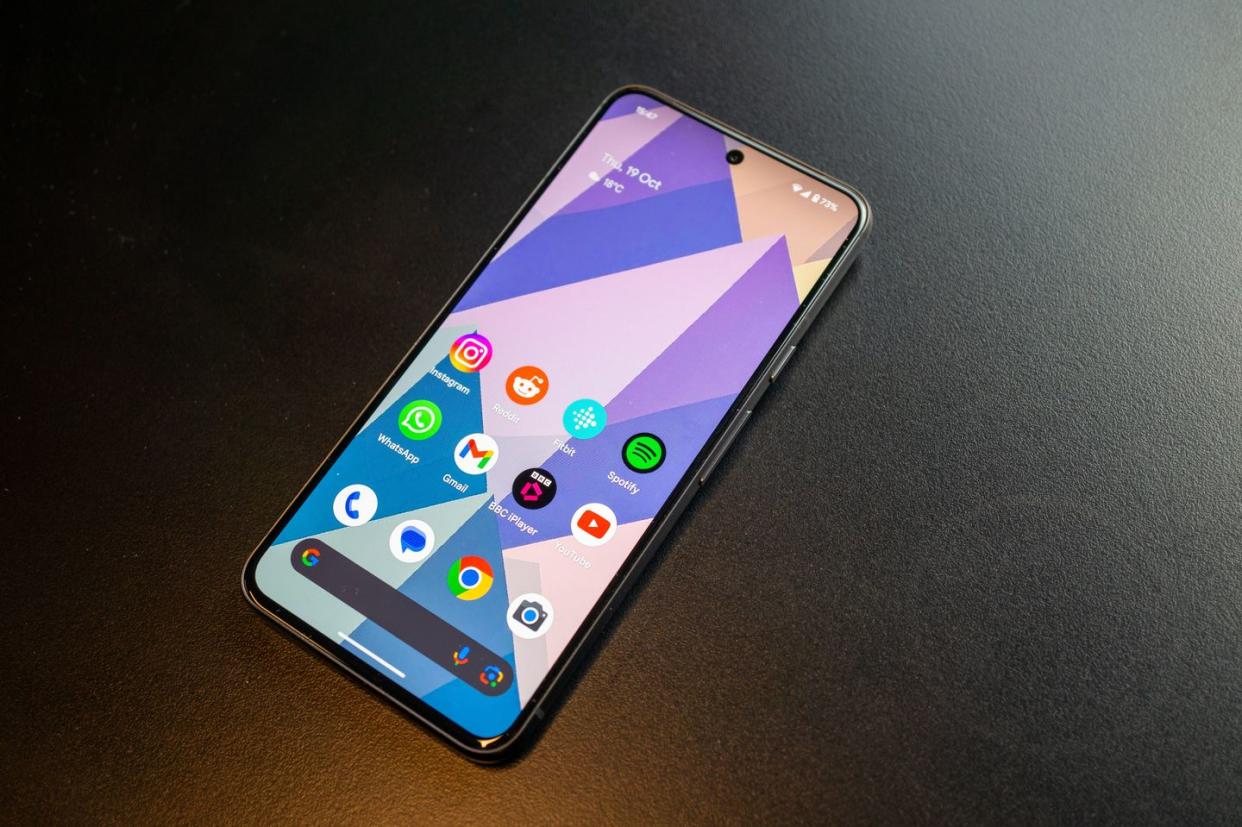
Software is the backbone of the Pixel – and it’s not limited to the cameras, but also Google Assistant. A mode called Summarise lets you get a brief of a website to show you the key points. The call screening has been enhanced – with Google claiming you’ll get 50% fewer spam calls – and it processes multilingual speech faster.
At this stage, not all work as intended, or are as seamless as we’d like. The summary tool gave us an error message multiple times, with one Google blog confirming that – at least for now – it’s only available if your phone is set to US English. As we mentioned, the Best Take mode makes you backup the snap to Google Photos every time, meaning it requires an extra step and not all processing is on-device.
Future support is very strong, though. If Google sticks to its word, you’re getting Android and security updates for seven years. That means you may still be using the Pixel 8 in October 2023. That is brilliant, as long as you don’t think about what age you’ll be when that date comes.
Google Pixel 8 battery
There’s a 4,575mAh capacity battery in the Pixel 8, and while it is tricky to properly get a measure of the cell from a week’s use, we are confident that you’ll comfortably get a full day of use between charges.
We generally use it with moderate use – checking emails, watching videos on YouTube or BBC iPlayer, browsing social media, reading the news and listening to Spotify for at least two hours during the commute to-and-from work. But even when we were gaming, taking photos and downloading app updates, it didn’t seem to drain dramatically.
Google offers an adaptive charging mode that extends the lifespan of the battery life by slowing down how much power it takes in if it’s left on charge for a long time, but that takes two weeks to analyse your charging routines before kicking in properly. We’ll be sure to update this article in the coming weeks after we get some more hands-on experience.
You get wireless charging of up to 12W with any Qi chargers or up to 18W if you’re using the Google Pixel Stand, plus a battery share mode that lets you fuel Qi-supported wireless devices by setting them on the back of the phone. It works flawlessly (we tested it with the Marshall Motif II) and even when we had a thicker case on the phone, too.
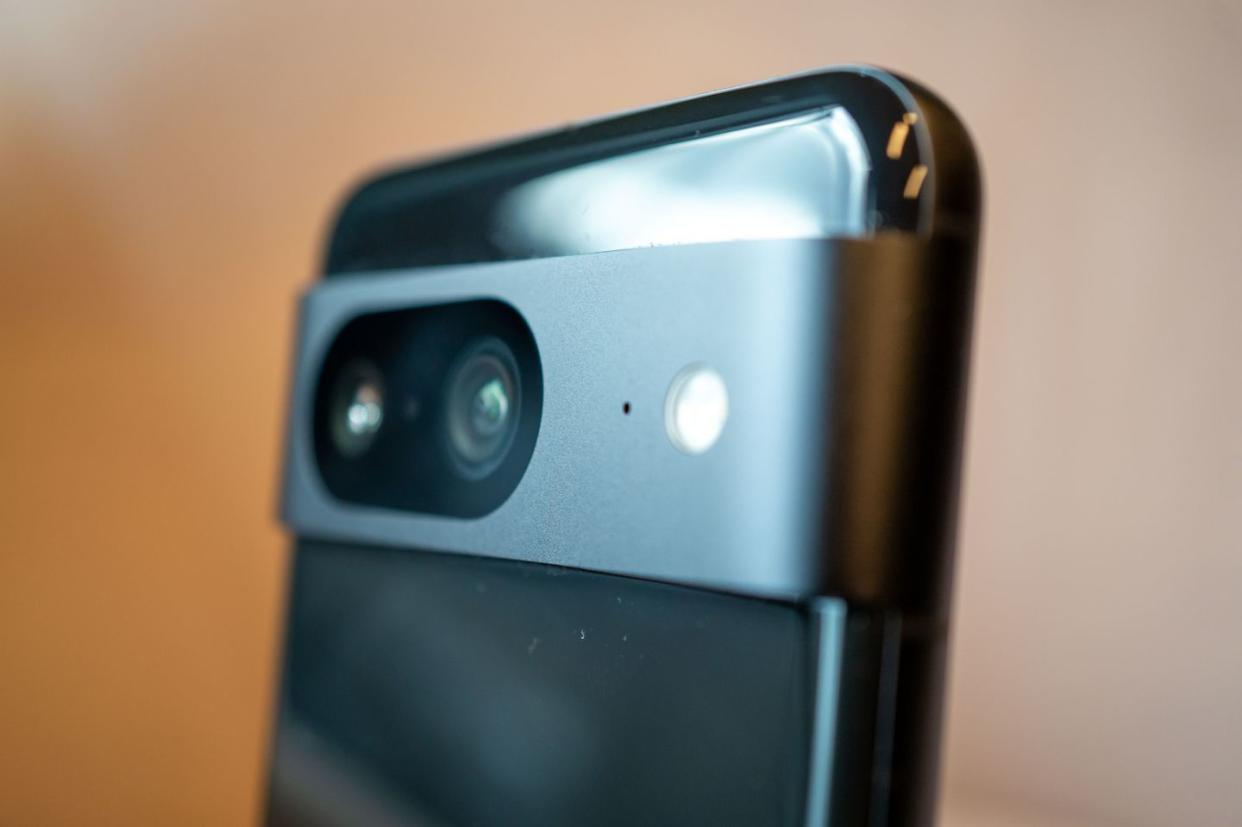
Google Pixel 8 drawbacks
If you dislike the design of the Google phones since the Pixel 6, you aren’t going to be won over by this one. Not much has changed with the aesthetic of the Pixel 8 and the camera bump still attracts dust over time – although we appreciate that this model now feels more pocketable.
There’s still no expandable storage, and you can only choose from 128GB or 256GB, so you’ll also need to invest in a quality external drive (or use Google’s cloud storage) if you want to create backups of your data, photos or videos. And even though the battery seems solid, it’s no longer totally unreasonable to wish for a two-day lifespan between charges.
Google Pixel 8 verdict
The Pixel 8 is an easy recommendation. It’s got heaps of power, the display is bright, the smaller size feels great to hold, and it gives even the most casual of photographers the ability to take impressive shots.
Not everyone will use the AI features every day – and some, like Best Take, are borderline creepy – but it’s undeniably very smart. After a week of use, we don’t miss the extra screen of the 8 Pro, and unless you need the telephoto lens, temperature sensor and a few extra AI video modes, this model gives you a flagship experience for a better price.
Should you upgrade? It depends. This is the best standard Pixel yet – and it’s worth it if you’re coming from an increasingly-outdated handset like the Pixel 5, 6 or 6a. Those all lack the newer chip, secure face unlock, brighter screen, high refresh rate and the Magic Editor. But if keeping your budget down is a priority, the Pixel 7a is under £450, the still-excellent Pixel 7 is now likely to see price cuts, and you’ll find some great refurbished prices on the Pixel 6. But if you want an Android handset and are new to the Google Pixel line-up, we advise starting here.
You Might Also Like
